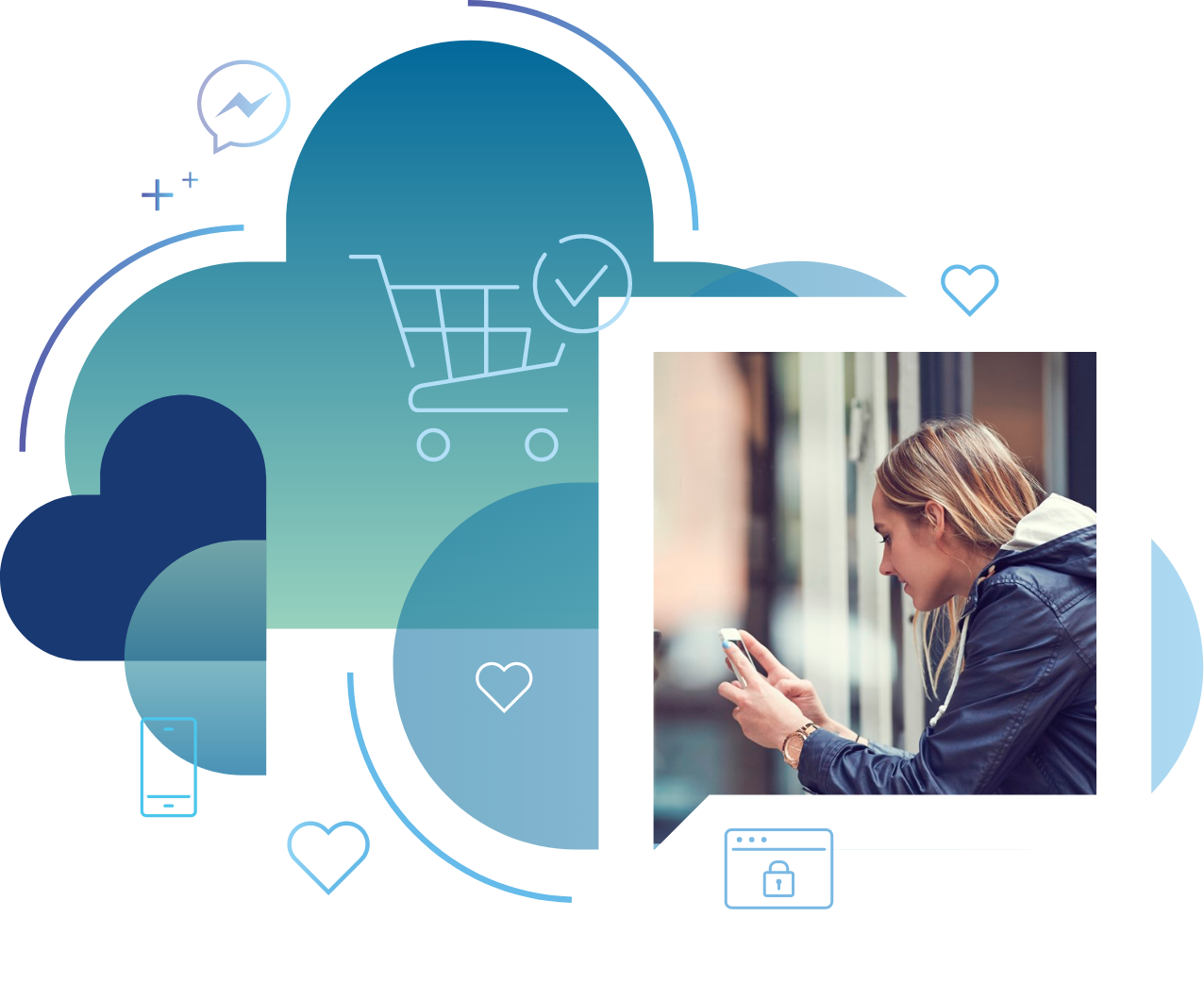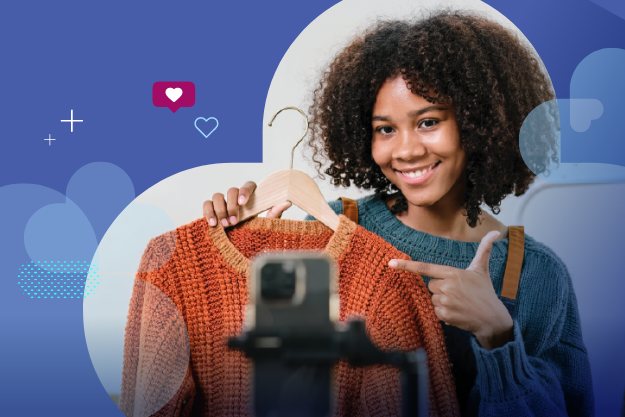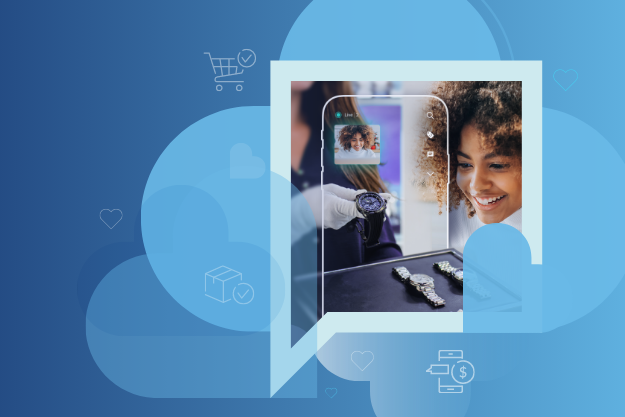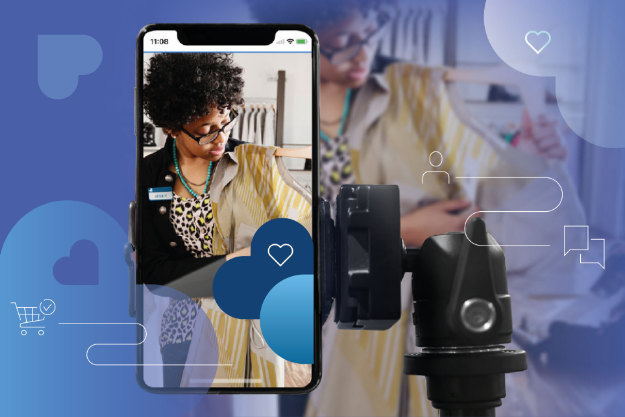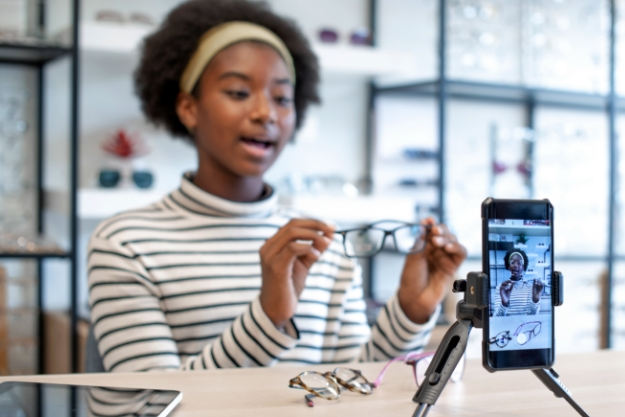It’s time for your brand to go live, and commerce is ready to share the stage. For proof, look no further than China, which saw livestream shopping explode from $3 billion to $171 billion in gross merchandise value from 2017-2020.
One pandemic later, markets like the United Kingdom and the United States are primed for adoption as well as livestream shopping surges amongst the top live commerce trends. The U.S. livestreaming market is projected to reach $32 billion this year and expand to $68 billion by 2026, according to a report by Coresight Research.
Pair that sales potential with booming consumer interest, and livestream shopping has officially shifted from nice-to-have to must-have for retail brands. According to a recent survey of U.K. and U.S. shoppers, 36% indicated purchasing during a live video shopping event.
This interest will continue to grow as major social companies like TIkTok continue to develop avenues for brands to sell products across their platforms, and eCommerce juggernauts like Walmart and Amazon proliferate the method on their own stream and shop channels.
For brands looking to adopt livestream shopping, fear not; the train has not left the station. In fact, the explosion of interest from channels, brands, and consumers means that the tracks have now been laid for new brands to enter this space easily.
Let’s explore how your brand can successfully start livestream shopping, and if your team is ready to begin the conversation, download our checklist for your program.
Key takeaways
What do I need to know about livestream shopping?
There are different types of live video commerce, and livestream shopping can connect across the customer journey.
Livestream shopping is more than just hitting “Record.” It starts with determining what success looks like for your brand and how it impacts the customer experience.
Activation depends on scale, but any organization can get started quickly. There is a simple roadmap for launching livestream shopping for your brand.
Understanding the difference between live video shopping methods
Livestream shopping, or one-to-many livestream shopping, is a retail experience that allows customers to watch a live video stream and purchase products in real-time. It differs from one-to-one live shopping in that the customer is part of a wider audience who interacts, engages, and transacts with the brand, host, or influencer as part of what is effectively a showcase, rather than having a personal conversation with a product expert.
Customers can ask questions, request additional information, and even make purchases directly through the video stream, which is supported by a live video shopping platform. This software connects the broadcast with each brand’s website or social channels and the additional technology required to support real-time transactions, product carousels featuring available inventory, customer service requests, and engagement.
Both shopping models actually work well in tandem. Brands like Ribble Cycles, a leading British bicycle manufacturer, utilized both livestream shopping events and one-on-one video shopping to support customers at different stages of the buying journey. As a result, Ribble’s customers spent 36% more on its products while utilizing live commerce solutions.
What makes livestream shopping unique – and why it could account for 20% of all eCommerce by 2026 – is how it connects touch points across the customer journey. Any brand can “go live” in minutes, but there is more to a successful live shopping strategy than simply hitting “Record.”

Defining success for livestream shopping events
Livestream shopping is the blending of live and social commerce. It has the power to connect brand and demand across any company’s entire digital ecosystem. But it’s important to think beyond transactions and start with customer experience when shaping a live shopping strategy. What are your customers interested in watching or, even more specifically, what would be worth their time?
This shopping model creates an immersive and engaging experience for customers, as it tends to work best with a product demonstration, launch, or showcase. Brands like Currys use livestream shopping to reach wider audiences and help customers shop however they choose, keeping their customer experience personal and accessible.
Ultimately, the stream itself comes down to vibes. Do you want your stream to feel like Steve Jobs introducing the iPhone in 2007 or is the Windows 95 launch more your company’s style?
There are many things to consider when shaping a single event or an entire product series, but you have to remember that this is an event. What ultimately matters is authenticity and creating a moment worth your audience’s attendance and attention.
According to a commissioned study conducted by Forrester Consulting on behalf of Emplifi, 86% of social commerce leaders expect to or have achieved a positive return on their social commerce investment within one year. Livestream shopping can be a cornerstone of that plan if you focus on relationships and not merely transactions.
Rates and definitions of success will vary for each brand, but it’s important to establish KPIs that aren’t limited to just sales. Here are some key steps toward helping you do that.
Assemble your team
Cross-functional teams are a cornerstone of a successful livestream initiative. Since livestream shopping influences so many steps of the customer journey, you need to assemble partners from an intersection of disciplines before going live.
Many companies miss this step. A Forrester Consulting study found that just 26% of social commerce decision-makers reported a close alignment between capabilities, tools, and goals like capturing the next generation of customers.
Certainly, it’s possible to have too many cooks in the virtual kitchen but, due to the reach, brand impact, technological requirements, and logistics, it’s best to organize the right team to align goals, capabilities, and execution to bring livestream shopping to the small screen.
This varies from organization to organization, but the building blocks you should consider include:
Brand & Communications: Their role is to keep the event in line with brand voice and visual identity, when needed, and think about the macro impact of decisions. You’ll ultimately want to promote the event across brand channels, so think about that effort with your partners and not in a vacuum.
Customer Care & Support: Live shopping events offer many attendees the opportunity to ask questions, dig deeper, or simply have a one-on-one conversation based on something they’ve heard. You need a mechanism to support this in order to maximize the impact of your live event. Don’t leave your shopping cart alone in the battle for purchase.
IT: There are key technology decisions across any livestream shopping action plan, so work with your experts – whichever department they sit in – to connect digital, social, revenue operations, and eCommerce to check every box.
Events Marketing: Livestream shopping is an event, so if you have established events teams, utilize their experience in hosting and organizing these types of moments. Ultimately, live streams are a stage, and many people work behind the scenes to make sure what’s on screen – or on stage – goes off without a hitch.Product & Product Marketing: You’ll need the voice of the customer in this process but, maybe even more importantly, you’ll want to discuss the strengths and weaknesses of products before conducting demos or showing them live. There’s likely nuance in the product or the target audience that would inform your event planning.
Determine your audience
Your broadcast is going to reach someone. But who are those people? What are their needs? What do you know about them, and what would you like to learn about them
Livestream shopping offers an opportunity to build a relationship with your customers, learn more about their needs, and strengthen the bond with your brand. Establish a vision of your audience, and be prepared to shape that as you work through the process.
It’s safe to assume that Gen Z – who leads other consumer demographics with as high as 47% adoption of livestream purchasing in the U.S. and U.K. – will be part of your livestream crowd, but measurement and iteration as you grow are key to shaping the content of your programming. Make sure you have an understanding or base idea of who the broadcast is for before going live with your message.

Choose a live video shopping platform
The live video shopping platform is what provides your livestream shopping stage, so where are you going to broadcast? You have options, including utilizing social channel-specific offerings like TikTok. But inevitably, the power of livestream shopping requires coordination across the customer experience journey to plan, promote, go live, analyze, and support the path to purchase.
Consider what video shopping platform fits your overall needs — not just the streaming portion — and provides the best experience for your customers. Here are some key factors to consider when selecting the best fit for your brand:
Features: Can it do everything your initiative requires? Does the platform offer the ability to interact with customers in real-time, host product carousels, integrate real-time monitoring, and handle payment processing?
Compatibility: Remember the need for IT on your super team? Here’s where you evaluate the platform's ease of use and compatibility with your existing systems. When possible, test and demo the experience.
Analytics: What is possible with the platform's analytics and reporting capabilities? The goal is to iterate, and track your performance and make data-driven decisions. Can you evaluate metrics across your customer’s journey before and after the event in one place?
Scalability: Remember, a livestream shopping event is much more than the ability to go live. Does your platform scale easily? Does it integrate seamlessly with other marketing technologies? Do analytics dashboards connect or remain siloed?
Cost: Certainly, any platform must align with your budget and ROI goals. Even as most programs have the potential to pay off within one year, you still need something to fit your plan.
Establish the star(s)
Your audience and stage are set, but who is leading the show? There are multiple ways to approach this, and all of them depend on your brand. This is where authenticity reigns, meaning choose a host or “stream team” that speaks your audience’s language, literally and figuratively.
Walmart and Amazon align real-life experts with many of their product categories. This is a good way to blend an authentic person and host with the product you’re trying to showcase and sell. Certainly, this depends on your available budget and brand.
Brands that utilize user-generated content (UGC) deliver 29% higher web conversation rates and, according to an Emplifi survey (conducted by Harris Interactive), reviews and ratings from real-life customers are more likely to impact purchasing decisions compared to influencers and celebrity reviews.
This means you have options for how you approach your livestream content. Here are some avenues to consider:
Internal voices: Is there a member of your sales, product, or marketing team that took improv lessons on the side? (We all know that guy.) You don’t necessarily need comedy chops, but utilizing a well-spoken or engaging internal associate can fuel a good livestream event if they’re suited to the presentation type you choose. This will lower costs, and it supports authenticity if the person figuratively speaks the same language as your audience.
Expert or panel: The quickest path to content is to blend experts in conversation about (insert topic here). You can utilize internal associates paired with external partners or invited speakers to drive a meaningful stream. Exposure for third-party experts tends to keep costs low, if that’s a concern.
Influencers: If you have the ability to bring on a seasoned influencer – either micro or macro – you’re in a position to tap into aligned or established communities that can supercharge your livestream event. And there are companies that can help align the right community and creator to fit your needs.
Test live streaming on organic channels
It’s understandable that “technical difficulties” are every leader’s greatest fear for live events. Almost anything can happen during a live broadcast, including an unintended impact to your stock price.
That’s why effective planning, coordination and, when possible, testing is ideal. You already have options through brand social channels like TikTok, YouTube, Instagram, and LinkedIn. Working with your brand, communications, or social media teams could offer shared benefits through testing a live event, using content that fits both brand and commerce like product launches, demos, or expert panels.
Organize your livestream approach in organic before adding the shopping component. This is the quickest way to understand efficiencies and best practices.

Create your event content
Livestream content doesn’t necessarily require a “script,” but structure is important. Remember what we said about authenticity? One of the benefits of using influencers, external experts, or panel conversations is that the livestream performance tends to be more natural, and there is a rhythm to a product launch, presentation, or demo that can create a track for the presentation.
Scripted events can be powerful tools for showing off your product or generating sales interest but, again, the approach for your event content really depends on your audience, product, and brand identity. So, go with what feels right, and use monitoring and customer support to engage the audience to help keep momentum during the show.
The important part is to structure your event around key moments, talking points, and timing to fit your stage. It’s likely that a recording of each event is useful for brand content, product demos, or future promotion. It’s a live event, so mistakes might happen, but a good structure keeps the show moving toward your final destination.
Promote your event
It’s important to cast a wide net to draw your audience to the event. This is where livestream shopping can connect all brand channels. Find your hook – key moment, influencer attending, or product feature – and promote across your website, product pages, dedicated event page, email marketing, and brand social.
Some companies like to utilize QR codes at physical locations to connect physical and digital and, if you’re partnering with any level of influencer, it’s integral to cross-promote within their established followers. This is where platforms with content planning, promotion, analysis, customer care, and live streaming capabilities under one roof simplify the process to an end-to-end solution for leaders and event planners.
Learn, analyze, and reuse
The actual event recording is not just used for brand promotion. It’s a learning and training opportunity. Once your event is complete, it’s time to look at the entire campaign and customer journey to see what worked or where there is room in the path for improvement.
On-demand recording can be valuable for website traffic and reaching customers on their own time, which means the lifespan of a single livestream shopping event can impact brand awareness, product education, and sales conversions beyond the single stream. For example, consider utilizing your client email list to get the recording – or even just select sections – in front of the right people.
Creating segments for attendees or sharing with customers who said they’d attended, but didn’t is another opportunity to utilize the stream’s content. There are many ways to keep the conversation going beyond just the day of the show.
Get started with livestream shopping
An Emplifi/Forrester Consulting study found that 42% of social commerce decision-makers plan to implement livestream shopping with their business in the next 12-24 months. Now is the time to evaluate, plan, and develop live video shopping strategies for your brand.
If you’re interested in a one-to-many video shopping platform that connects the entire user experience, Emplifi helps power live shopping for some of the world’s top brands, helping increase conversions and average spend. Speak with an Emplifi expert today to see how we can help you take your eCommerce strategy to the next level.














